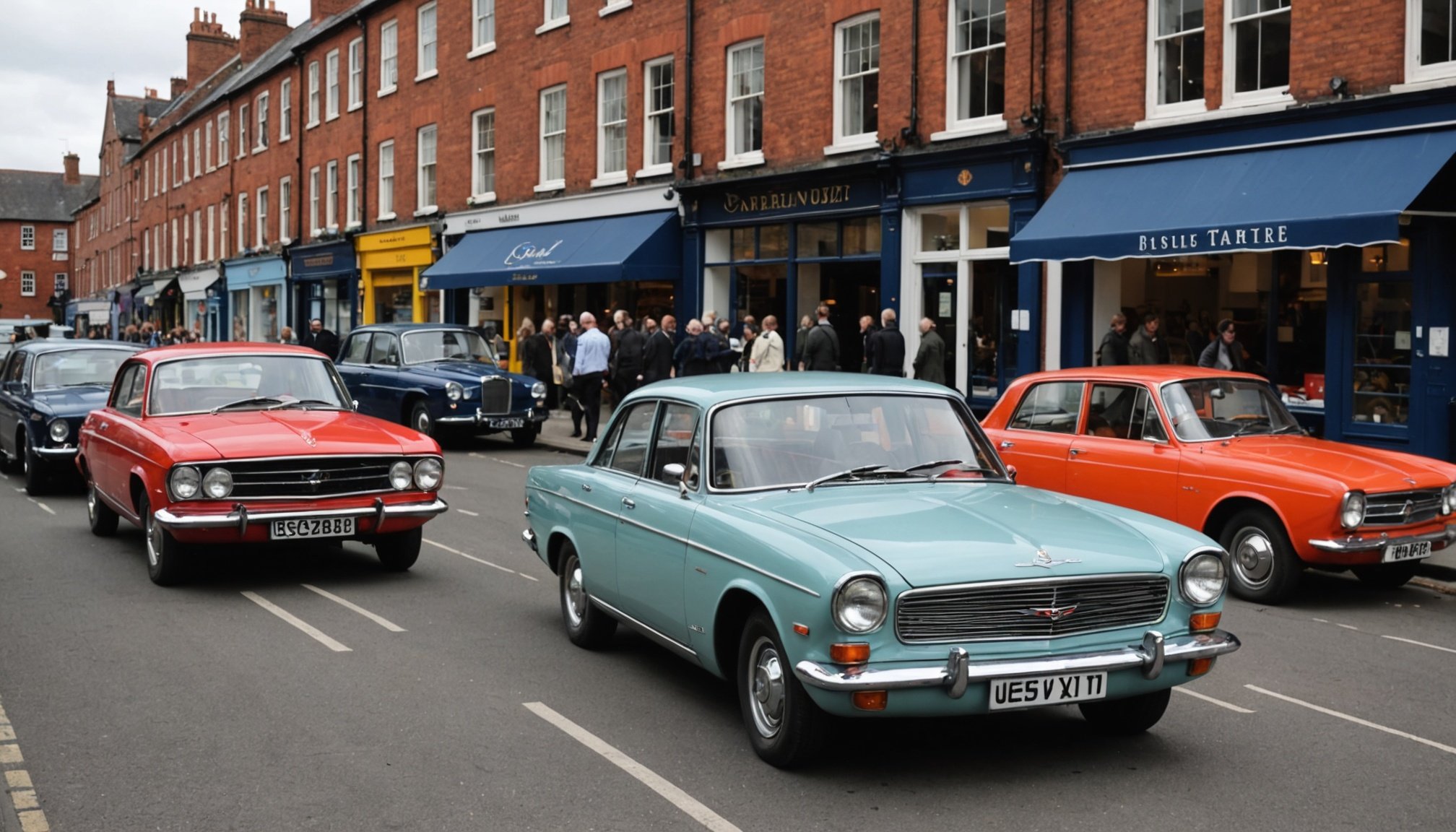Understanding the Importance of Safe Vintage Car Transport
When it comes to vintage car transport safety, there’s more at stake than simple logistics. These vehicles are more than just cars; they are pieces of history, often carrying significant value both sentimentally and financially. Proper transport methods are crucial as they help preserve these timeless machines during transit.
First and foremost, the importance of transport methods cannot be understated. Vintage vehicles are delicate, often featuring one-of-a-kind parts that cannot be easily replaced if damaged. Coupled with their often fragile structures, the importance of transport methods ensures that each component arrives intact.
A découvrir également : Exploring the Cutting-Edge Innovations in Home Moving Technology Across the UK
Improper transport can lead to numerous potential risks. For instance, exposure to extreme weather conditions may cause rust or paint damage. Likewise, improper securing methods might result in scratches, dents, or other physical harm, compromising the vehicle’s integrity.
Preservation during transit also requires understanding the unique requirements of vintage vehicles. These cars might necessitate specific conditions, like temperature-controlled environments to maintain their mechanical stability and aesthetic appeal. As such, choosing a transport service that appreciates these nuances and prioritises vintage car transport safety can safeguard these irreplaceable assets for future generations to enjoy.
Dans le meme genre : Essential Tips for Safely Moving Your Exotic Plants During a UK Home Relocation
Preparing Your Vintage Car for Transport
Before embarking on the journey of transporting your vintage car, conducting a vehicle condition assessment is crucial. This step involves a meticulous inspection of the car to identify existing issues or vulnerabilities. It allows for proper documentation of the car’s current state, ensuring any potential damage during transport can be clearly identified.
Next, the importance of cleaning and detailing cannot be overstressed. Keeping the vehicle spotless not only accentuates its charm but also helps in the preservation of its bodywork and interior. A clean vehicle aids in spotting anything out of place after the transit and ensures its arrival in pristine condition.
It’s also vital to ensure all necessary documents and insurance are set. This includes updating your registration and obtaining transport insurance tailored to vintage cars. Proper documentation serves as a safeguard against mishaps or legal issues during transport, providing peace of mind.
By following these measures, you not only secure the aesthetic and monetary value of your prized possession but also mitigate any unforeseen risks. With these preparations, you can facilitate a smooth transport process, allowing your vehicle to reach its destination safely.
Choosing the Right Transport Method
When it comes to transporting your vehicle, understanding the differences between enclosed vs. open transport is crucial. Choosing the right option depends on various factors, including your budget, the distance, and the level of protection required for your vehicle.
Enclosed Transport
Enclosed transport is a premium service that offers maximum vehicle protection methods. This method is ideal for luxury cars, antique vehicles, or those with significant sentimental value. The vehicle is shielded from weather conditions and road debris, ensuring it arrives in pristine condition. However, this level of protection comes at a higher cost. Prices can be significantly above those for open transport, reflecting the added security and care.
Open Transport
For those looking to balance cost with practicality, open transport is a popular choice. It is the most common and economical transport option, suitable for standard vehicles. While it does expose your car to elements like rain or dust, the overall risk of damage is low. Budget-conscious consumers might find this method more suited to their needs, especially for shorter distances or less expensive vehicles. Carefully weigh the advantages and disadvantages of open transport to determine if it meets your specific requirements.
Best Practices for Loading and Securing Your Vintage Car
When it comes to loading vintage cars for transportation, meticulous attention to detail ensures both functionality and safety. The first critical step is preparing the ground. Always load on level ground to prevent any unwanted movement during this process. Use loading ramps tailored to your vehicle’s dimensions, ensuring they are stable and positioned correctly. Protect your car with quality, padded straps specifically designed for vintage vehicles, which can prevent scratches and abrasions.
Once your vehicle is on the transporter, securing it becomes paramount. Implement techniques like wheel chocking and use heavy-duty ratchet straps to anchor your car securely. This minimizes any movement during transit and prevents damage. Equally useful are tie-down points; attach safety chains to these spots as an additional safeguard.
Finally, investing in quality transport safety equipment is a long-term benefit. Essential tools include wheel nets, axle straps, and a winch capable of handling the weight of your vintage vehicle. These pieces ensure a comprehensive safety net for both the loading and securing processes, offering peace of mind while protecting your valuable asset during transportation.
Selecting a Reputable Transport Company
When it comes to transporting vintage cars, choosing a reliable company is of utmost importance. You can start by researching various vintage car transport companies through online directories and forums. It’s crucial to compare multiple options to ensure you find a service that fits your needs. Evaluating reviews and recommendations can offer valuable insights into the reputation of the transport companies you’re considering. Customer reviews often reveal the level of service reliability and professionalism you can expect.
Interacting with previous customers can also help affirm your choice. Questions such as “How satisfied were you with the service?” and “Would you hire the company again?” can provide clarity on reliability. Don’t shy away from requesting a list of testimonial references directly from the transport company.
Before deciding on a company, it’s wise to ask detailed questions to ensure reliability. Inquire about their insurance policies, delivery timelines, and procedures for handling vintage cars. Additionally, ask if they provide tracking options during the transport process. By following these practices, you’re more likely to select a transport company that will securely and professionally handle your vintage car, giving you peace of mind throughout the entire process.
Navigating Regulations and Legal Requirements
Transporting vintage cars in the UK involves a complex web of transport regulations and legal requirements that must be adhered to strictly. Understanding the intricate details of these regulations not only ensures smooth transit but also protects owners from potential legal pitfalls.
Transport Regulations UK
In the UK, transport regulations are designed to include everything from roadworthiness to emissions standards, even for vintage vehicles. Owners must ensure their vehicles meet specific safety standards. This includes having valid MOT certification for historic vehicles, even if they are often exempt.
Documentation Required
When transporting vintage cars, documentation is key. Owners need to provide proof of ownership and valid road tax documentation. Additionally, a pre-arranged itinerary for the journey may be needed, detailing your vintage car’s compliance with transportation rules.
Liability and Insurance Implications
Navigating insurance requirements is crucial. Comprehensive coverage specifically tailored for vintage car transportation ensures protection against any transit-related damages. Owners must liaise with their insurance providers to ensure liability coverage is adequate, reflecting the car’s unique value and usage.
Failing to comply with these vintage car legal requirements may result in fines or complications, making compliance a vital part of the journey with any prized automobile.
Common Challenges in Transporting Vintage Cars
Transporting vintage cars can be a complex endeavour due to their unique value and delicacy. Among the transport challenges are potential damage from external elements and vibrations during transit. These vehicles often have parts that are irreplaceable, escalating the need for meticulous care.
Several strategies can help with problem-solving for vintage car transport, ensuring safety throughout the journey. Firstly, choosing a reputable company with experience in handling similar assets is crucial. They should provide enclosed transport options to protect the vehicle from adverse weather conditions and road debris. Furthermore, securing proper insurance tailored for vintage car transport can mitigate financial losses in case of accidental damage.
Route planning tips play a vital role as well. Selecting a route with minimal stops and smooth roads can reduce the risk of jolts and bumps that might harm the car’s chassis or suspension. Using GPS tools to monitor and adapt to traffic conditions is an excellent way to avoid unnecessary detours.
In conclusion, understanding and addressing these challenges with a proactive mindset is imperative to the successful transport of vintage cars, preserving their integrity and ensuring owner satisfaction.











